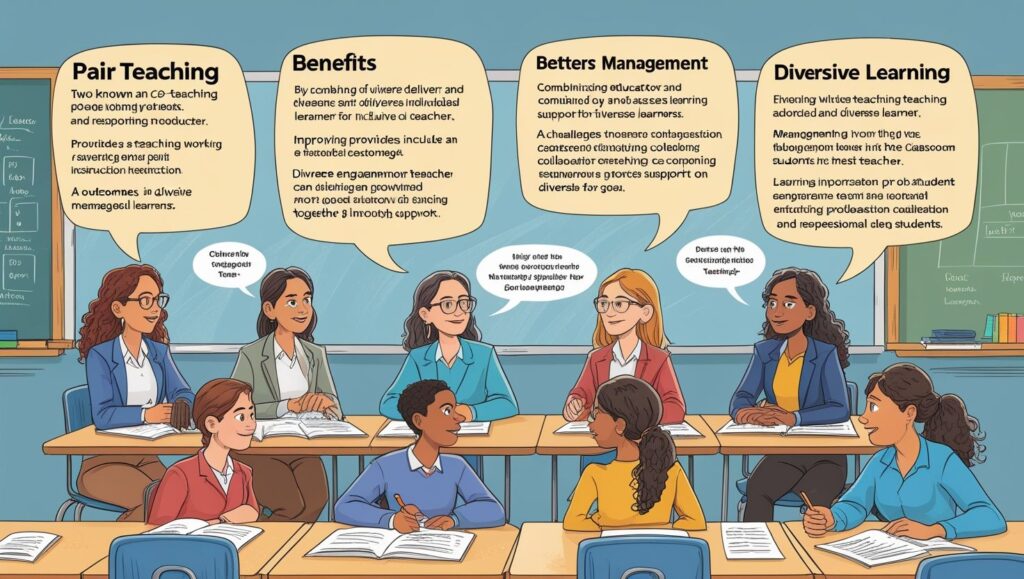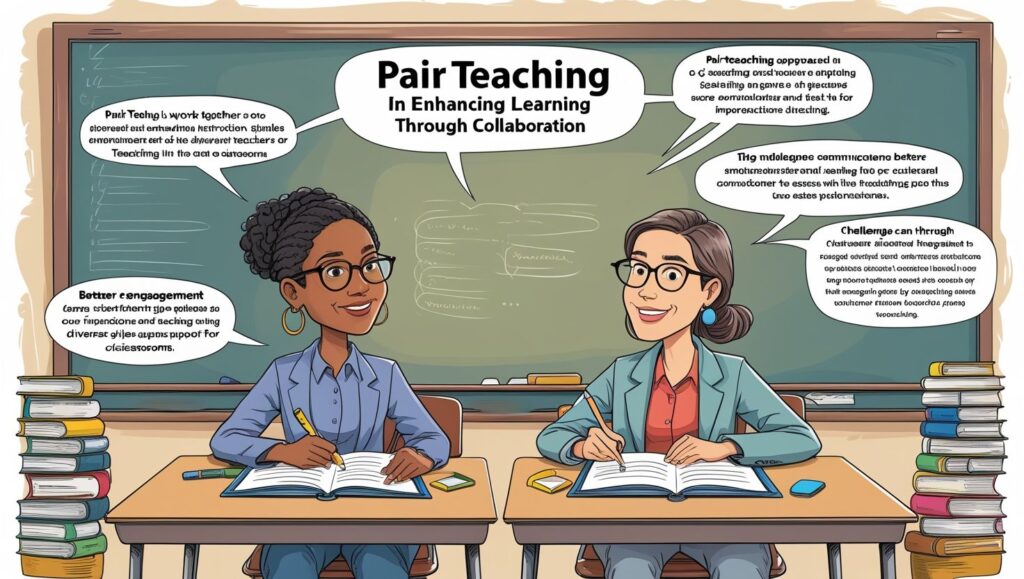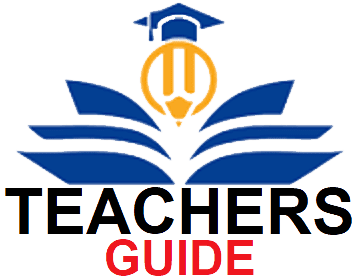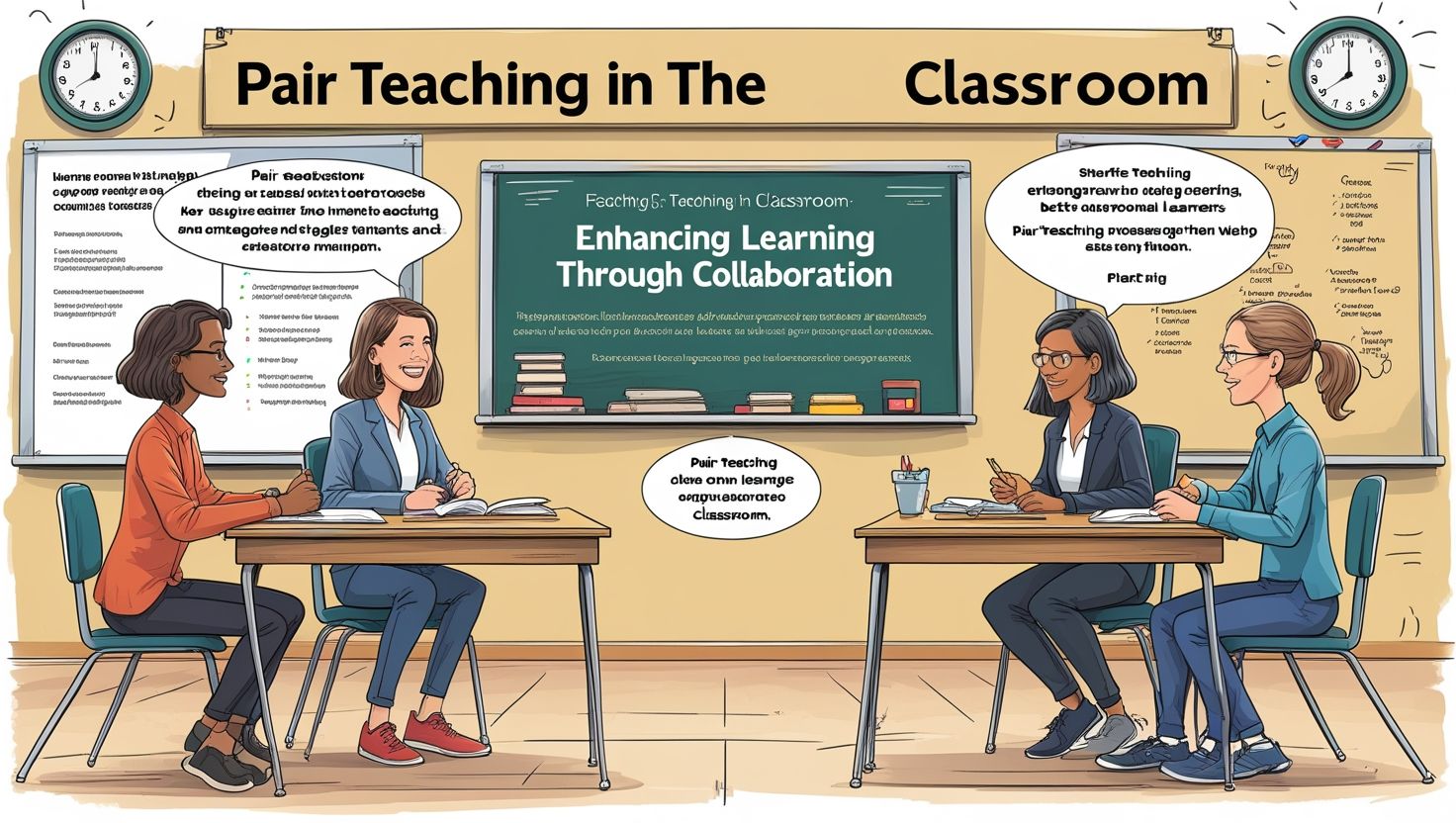Introduction
Pair Teaching in the Classroom for Enhancing Learning, In the ever-evolving landscape of education, educators are constantly seeking innovative methods to enhance student engagement, improve learning outcomes, and foster a more inclusive and dynamic classroom environment. One such approach that has gained traction in recent years is pair teaching, also known as co-teaching or team teaching. Pair teaching involves two educators working collaboratively to plan, deliver, and assess instruction within the same classroom. This model not only benefits students by providing diverse perspectives and teaching styles but also offers professional growth opportunities for teachers. This article explores the concept of pair teaching, its benefits, challenges, and practical strategies for successful implementation in the classroom.
What is Pair Teaching?
Pair teaching is a collaborative teaching model where two educators share responsibility for a single group of students. This approach can take various forms, depending on the goals of the educators and the needs of the students. In some cases, both teachers may be equally involved in delivering instruction, while in others, one teacher may take the lead while the other provides support. The key element of pair teaching is the shared responsibility and collaboration between the two educators.
Pair teaching can be implemented in various educational settings, including primary, secondary, and higher education. It is particularly effective in inclusive classrooms, where students with diverse learning needs are taught together. By combining their expertise, the two teachers can create a more flexible and responsive learning environment that caters to the needs of all students.
Benefits of Pair Teaching
- Enhanced Student Learning Outcomes
One of the primary benefits of pair teaching is the potential for improved student learning outcomes. With two teachers in the classroom, students have access to a wider range of expertise and teaching styles. This can lead to a more engaging and dynamic learning experience, as students are exposed to different perspectives and approaches to the subject matter. Additionally, pair teaching allows for more individualized attention, as one teacher can work with small groups or individual students while the other leads the class.
- Increased Student Engagement
Pair teaching can also lead to increased student engagement. The presence of two teachers in the classroom can create a more interactive and participatory learning environment. Teachers can use a variety of instructional strategies, such as role-playing, debates, and group discussions, to keep students engaged and motivated. Furthermore, the collaborative nature of pair teaching can model positive teamwork and communication skills for students, encouraging them to work together and support one another.
- Support for Diverse Learning Needs
Inclusive classrooms often include students with a wide range of learning needs, including those with disabilities, English language learners, and gifted students. Pair teaching can provide the necessary support to meet these diverse needs. For example, one teacher can focus on delivering the core content, while the other provides additional support to students who may need extra help. This approach ensures that all students have access to the curriculum and can participate fully in the learning process.
- Professional Development for Teachers
Pair teaching offers significant professional development opportunities for educators. By working closely with a colleague, teachers can learn from each other’s strengths, share best practices, and develop new teaching strategies. This collaborative approach can lead to a deeper understanding of the subject matter and more effective instructional techniques. Additionally, pair teaching can help build a sense of community among teachers, fostering a culture of collaboration and continuous improvement.
- Improved Classroom Management
Managing a classroom can be challenging, especially in larger classes or with students who have behavioral issues. Pair teaching can help alleviate some of these challenges by providing an additional adult presence in the classroom. With two teachers, it is easier to monitor student behavior, address disruptions, and maintain a positive learning environment. Furthermore, the collaborative nature of pair teaching allows for more creative and effective classroom management strategies.

Challenges of Pair Teaching
While pair teaching offers numerous benefits, it is not without its challenges. Implementing a successful pair teaching model requires careful planning, communication, and a willingness to collaborate. Some of the potential challenges include:
- Time and Scheduling
Pair teaching requires a significant amount of time for planning and coordination. Teachers must work together to develop lesson plans, align their teaching styles, and ensure that they are meeting the needs of all students. This can be particularly challenging in schools with tight schedules and limited planning time. Additionally, finding time for regular meetings and professional development can be difficult, especially if teachers have other responsibilities outside of the classroom.
- Compatibility and Communication
The success of pair teaching depends largely on the compatibility and communication between the two teachers. If the teachers have different teaching styles, philosophies, or personalities, it can lead to conflicts and misunderstandings. Effective communication is essential for resolving these issues and ensuring that both teachers are working towards the same goals. However, building a strong working relationship takes time and effort, and not all teachers may be willing or able to invest in this process.
- Role Definition and Equity
In pair teaching, it is important to clearly define the roles and responsibilities of each teacher. Without clear guidelines, one teacher may end up taking on more of the workload, leading to feelings of resentment and imbalance. Additionally, students may perceive one teacher as the “main” teacher and the other as an assistant, which can undermine the collaborative nature of the model. To avoid these issues, it is important to establish clear roles and ensure that both teachers have equal opportunities to contribute to the classroom.
- Assessment and Accountability
Assessing student learning and holding teachers accountable can be more complex in a pair teaching model. With two teachers involved, it can be difficult to determine who is responsible for specific outcomes or areas of instruction. Additionally, grading and assessment practices must be aligned to ensure consistency and fairness. This requires careful planning and coordination, as well as a shared understanding of assessment criteria and expectations.

Strategies for Successful Pair Teaching
Despite the challenges, pair teaching can be a highly effective instructional model when implemented correctly. The following strategies can help ensure the success of pair teaching in the classroom:
- Establish Clear Roles and Responsibilities
Before implementing pair teaching, it is important to establish clear roles and responsibilities for each teacher. This includes determining who will lead specific lessons, how responsibilities will be shared, and how decisions will be made. Having a clear understanding of each teacher’s role can help prevent conflicts and ensure that both teachers are contributing equally to the classroom.
- Develop a Shared Vision and Goals
Pair teaching requires a shared vision and common goals. Teachers should work together to develop a clear understanding of what they hope to achieve through pair teaching, both in terms of student learning outcomes and professional growth. This shared vision can help guide decision-making and ensure that both teachers are working towards the same objectives.
- Plan and Collaborate Regularly
Effective pair teaching requires regular planning and collaboration. Teachers should set aside time each week to plan lessons, discuss student progress, and reflect on their teaching practices. This ongoing collaboration is essential for aligning teaching styles, addressing challenges, and making adjustments as needed. Additionally, regular meetings can help build a strong working relationship and foster a sense of teamwork.
- Use a Variety of Instructional Strategies
Pair teaching provides an opportunity to use a wide range of instructional strategies. Teachers can take advantage of their combined expertise to create engaging and interactive lessons that cater to different learning styles. For example, one teacher may lead a lecture while the other facilitates a group discussion, or both teachers may work together to conduct a hands-on activity. Using a variety of strategies can help keep students engaged and provide multiple pathways for learning.
- Provide Ongoing Professional Development
Pair teaching can be a powerful form of professional development, but it also requires ongoing support and training. Schools should provide opportunities for teachers to participate in professional development workshops, attend conferences, and engage in peer observations. This can help teachers develop the skills and knowledge needed to effectively implement pair teaching and continuously improve their practice.
- Foster a Positive Classroom Culture
A positive classroom culture is essential for the success of pair teaching. Teachers should work together to create a supportive and inclusive environment where all students feel valued and respected. This includes modeling positive behavior, encouraging collaboration among students, and addressing any issues or conflicts that arise. A positive classroom culture can help build trust and rapport between teachers and students, leading to a more effective learning experience.
- Reflect and Adjust
Finally, it is important for teachers to regularly reflect on their pair teaching practices and make adjustments as needed. This includes seeking feedback from students, colleagues, and administrators, as well as conducting self-assessments. Reflection can help identify areas for improvement and ensure that pair teaching is meeting the needs of both students and teachers.
Conclusion
Pair teaching is a collaborative approach to education that offers numerous benefits for both students and teachers. By combining their expertise, two educators can create a more dynamic and inclusive learning environment that caters to the diverse needs of students. However, successful pair teaching requires careful planning, effective communication, and a willingness to collaborate. By establishing clear roles, developing a shared vision, and using a variety of instructional strategies, teachers can overcome the challenges of pair teaching and create a positive and effective classroom experience. As education continues to evolve, pair teaching represents a promising model for enhancing student learning and fostering professional growth among educators.


1 thought on “Pair Teaching in the Classroom for Enhancing Learning”
Comments are closed.